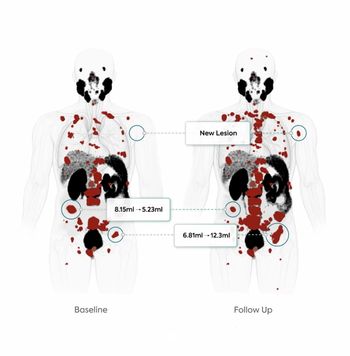
Active-shielding trims MRI weight
Picker International began shipping active-shield 1.5-tesla magneticresonance imaging systems in the fourth quarter of 1990. Threeof those units were installed before the Radiological Societyof North America meeting in November. Picker now offers the
Picker International began shipping active-shield 1.5-tesla magneticresonance imaging systems in the fourth quarter of 1990. Threeof those units were installed before the Radiological Societyof North America meeting in November. Picker now offers the Oxford-madeactive-shield magnet on its 0.5-, 1- and 1.5-tesla MRI systems.The vendor has shipped about 100 active-shield units, accordingto Surya N. Mohapatra, vice president and general manager of Picker'sNMR division (see story, page 5).
The reduced weight of active-shield magnets is an advantageover standard steel-shielded systems, said James McNally, managerof advanced technology for the NMR division. An active-shieldMRI unit weighs less than 30,000 pounds compared to about 70,000pounds for a comparable steel-shielded system, he said.
Lighter weight MRI systems require less structural supportbuilt into the imaging installation and, consequently, less ofan investment by the user. It is also easier to move an active-shieldMRI system from site to site. This allows the full shielding/scannercombination to be depreciated at the more favorable rates forequipment versus building investments, McNally said.
"It (the active-shield MRI) is a piece of capital equipmentthat can move with you as opposed to steel in the wall, whichwon't move. If you reinforce the structure to support a heaviermagnet, you can't take that with you either," he said.
Because the residual value of an active-shield magnet is higherthan that of a steel-shielded system, monthly lease payments maybe smaller, noted Mohapatra.
"It is an attractive proposition for people who want toget into high-field (MRI), but don't have a lot of money for monthlypayments," he said.
Active-shield high-field MRI systems have a five-gauss fringepattern extending about 3.5 meters from the magnet. This is sufficientfor most requirements, McNally said. If greater containment isrequired, a small amount of steel shielding can be added.
Hybrid steel- and active-shielded MRI systems, such as theunit offered by Toshiba (SCAN 11/21/90), trade off greater weightfor a more contained fringe field, he said.
The Picker 1.5-tesla active-shield system has a large, 1-metermagnet bore, which would not be as desirable if heavy steel shieldingwere used, Mohapatra said.
"If you want to go to a hybrid system and add steel, youhave to take a dramatic decrease in (bore) diameter to make thesystem's weight attractive," he said.
Newsletter
Stay at the forefront of radiology with the Diagnostic Imaging newsletter, delivering the latest news, clinical insights, and imaging advancements for today’s radiologists.




























